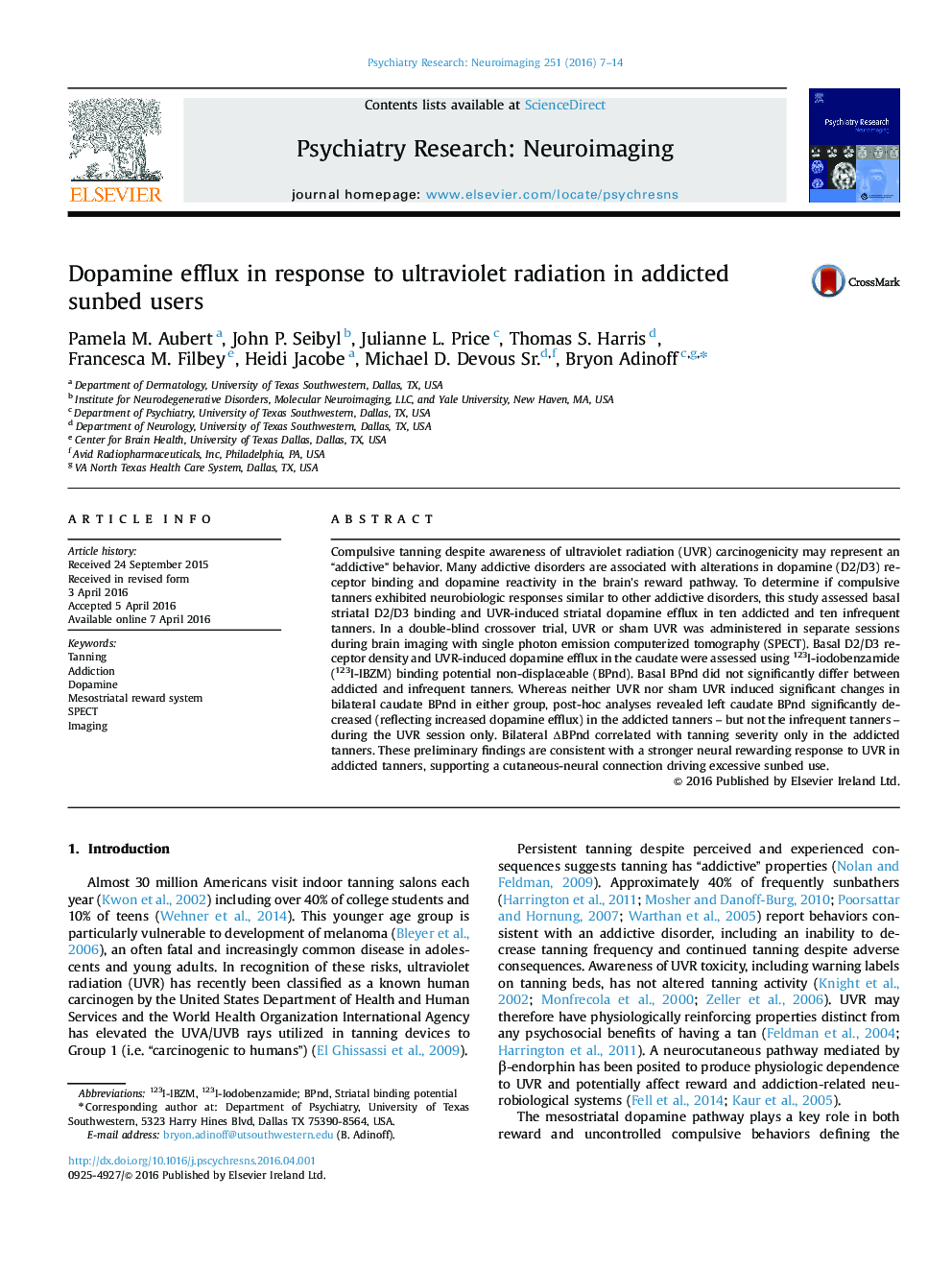| Article ID | Journal | Published Year | Pages | File Type |
|---|---|---|---|---|
| 334709 | Psychiatry Research: Neuroimaging | 2016 | 8 Pages |
•UVR induces striatal dopamine efflux in addicted, but not infrequent, sunbed users.•UVR-induced dopamine efflux correlates with tanning addiction severity.•A cutaneous-neural connection may drive excessive sunbed use.
Compulsive tanning despite awareness of ultraviolet radiation (UVR) carcinogenicity may represent an “addictive” behavior. Many addictive disorders are associated with alterations in dopamine (D2/D3) receptor binding and dopamine reactivity in the brain's reward pathway. To determine if compulsive tanners exhibited neurobiologic responses similar to other addictive disorders, this study assessed basal striatal D2/D3 binding and UVR-induced striatal dopamine efflux in ten addicted and ten infrequent tanners. In a double-blind crossover trial, UVR or sham UVR was administered in separate sessions during brain imaging with single photon emission computerized tomography (SPECT). Basal D2/D3 receptor density and UVR-induced dopamine efflux in the caudate were assessed using 123I-iodobenzamide (123I-IBZM) binding potential non-displaceable (BPnd). Basal BPnd did not significantly differ between addicted and infrequent tanners. Whereas neither UVR nor sham UVR induced significant changes in bilateral caudate BPnd in either group, post-hoc analyses revealed left caudate BPnd significantly decreased (reflecting increased dopamine efflux) in the addicted tanners – but not the infrequent tanners – during the UVR session only. Bilateral ∆BPnd correlated with tanning severity only in the addicted tanners. These preliminary findings are consistent with a stronger neural rewarding response to UVR in addicted tanners, supporting a cutaneous-neural connection driving excessive sunbed use.
